Small Shipping Container Innovations for Sustainable Living and Storage Solutions
In recent years, the concept of sustainable living has gained significant traction, leading to innovative solutions that not only address storage needs but also promote eco-friendly practices. One of the most compelling advancements in this arena is the use of small shipping containers. As these versatile structures gain popularity, experts like Dr. Emily Carter, a renowned architect and sustainable design advocate, emphasize their potential: "Small shipping containers are transforming the way we think about living and utilizing space, making sustainability accessible to everyone."
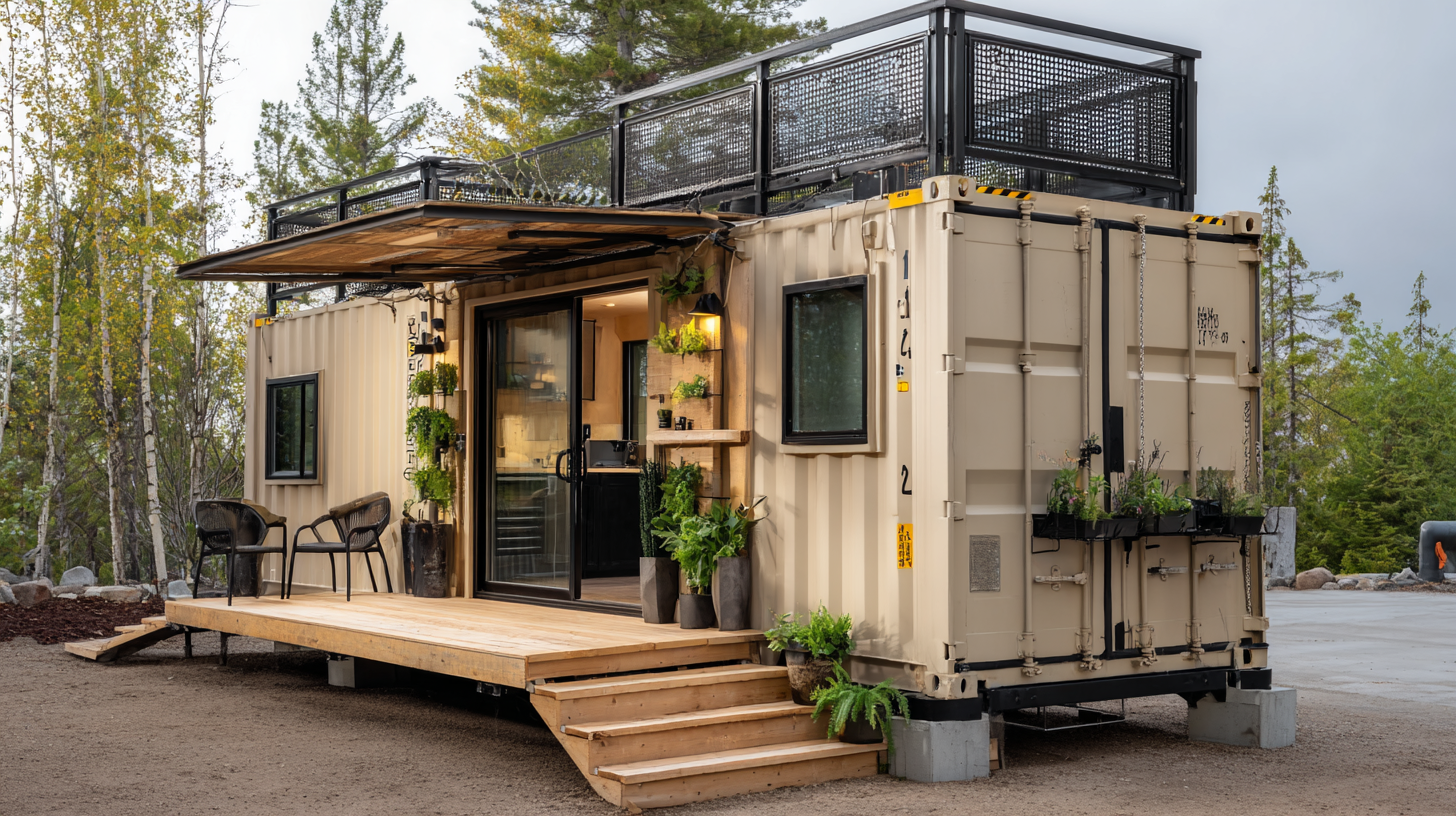
This article will explore the top five innovations in small shipping containers that are revolutionizing sustainable living and storage solutions. By showcasing these cutting-edge ideas, we aim to inspire individuals to consider small shipping containers not just as industrial relics, but as viable alternatives in the quest for a greener future.
Innovative Container Homes: Merging Style and Sustainability
The rise of innovative container homes represents a transformative approach to sustainable living, seamlessly blending modern design with eco-friendly principles. These structures, crafted from repurposed shipping containers, offer a unique solution to the housing crisis while minimizing environmental impact. Their modular nature allows for versatile configurations, empowering homeowners to create personalized spaces that reflect their style and functional needs.
In addition to aesthetic appeal, container homes are designed with sustainability in mind. Many incorporate green technologies, such as solar panels, rainwater harvesting systems, and energy-efficient insulation. This not only reduces the carbon footprint but also promotes a lifestyle that prioritizes resource conservation. Furthermore, the use of durable materials ensures longevity, making container homes a cost-effective alternative in the long run. As a result, these homes stand not only as a testament to innovative architecture but also as a beacon of sustainable living, inspiring others to rethink their approach to housing and environmental stewardship.
Eco-Friendly Shipping Container Gardens for Urban Agriculture
With the growing trend of urbanization, innovative uses of shipping containers are emerging as sustainable solutions for urban agriculture. Eco-friendly shipping container gardens leverage the versatility of containers to create efficient growing spaces in cities where land is scarce. According to a report by the National Gardening Association, urban gardening can enhance local food production, with 35% of households in urban areas engaged in growing their own fruits and vegetables. The shipping container garden model not only maximizes space but also employs hydroponic systems, enabling year-round cultivation with minimal environmental impact.
By utilizing recycled shipping containers, urban gardeners can establish green spaces that significantly reduce carbon footprints. Research indicates that container gardens can achieve yields 10 times higher than traditional outdoor gardens due to their controlled growing conditions. Moreover, a study by the American Society of Agricultural and Biological Engineers highlighted that such systems typically use 90% less water compared to conventional farming methods. This innovative approach not only addresses food security in urban locales but also contributes to community well-being by beautifying neighborhoods and promoting sustainable practices.
Small Shipping Container Innovations for Sustainable Living and Storage Solutions
| Innovation Type | Description | Benefits | Target Users |
|---|---|---|---|
| Vertical Gardens | Utilizing vertical space in containers to grow a variety of plants, maximizing yield in limited spaces. | Space-efficient, enhances air quality, and reduces heat absorption in urban areas. | Urban gardeners, schools, community centers. |
| Rainwater Harvesting | Systems designed to collect and store rainwater for irrigation and domestic use. | Reduces water bills, conserves water resources, promotes eco-friendly practices. | Homeowners, urban farms, community gardens. |
| Composting Systems | Integrated composting units within containers to recycle organic waste. | Reduces landfill waste, enriches soil, promotes sustainable living practices. | Environmentally conscious individuals, educators, urban horticulturists. |
| Solar Energy Solutions | Incorporating solar panels onto shipping containers for energy generation. | Reduces reliance on conventional energy, lowers carbon footprint. | Off-grid homes, eco-friendly businesses, renewable energy enthusiasts. |
Portable Workspaces: Transforming Containers into Green Offices
The transformation of shipping containers into portable workspaces represents a significant shift towards sustainable living and innovative design. These repurposed containers are not only environmentally friendly but also highly versatile. By reimagining their structural capabilities, designers can create functional offices that cater to modern work needs while minimizing resource consumption. This approach aligns with the growing demand for green solutions that prioritize efficiency and sustainability in an increasingly urbanized world.
Portable container offices offer a unique blend of mobility and convenience. They can be easily relocated to different sites, allowing businesses to adapt to changing environments without the need for extensive construction. These eco-conscious workspaces can be outfitted with energy-efficient installations, such as solar panels and rainwater harvesting systems, further enhancing their sustainability. As companies seek to reduce their carbon footprint, investing in innovative container solutions presents an ideal opportunity to embrace eco-friendly practices while maintaining a stylish workspace. Such developments not only contribute to sustainable living but also inspire a new paradigm in workspace design, merging function with environmental responsibility.

Smart Storage Solutions: Maximizing Space and Reducing Waste
In the pursuit of sustainable living, innovative smart storage solutions using small shipping containers have emerged as a practical answer to urban space shortages and waste reduction. By repurposing these containers, individuals can create modular living and storage spaces that are not only eco-friendly but also versatile. These units can be modified with smart shelving systems and multipurpose furniture, enabling residents to maximize every inch of available space while minimizing clutter.
Moreover, the use of these efficiently designed containers promotes a lifestyle that emphasizes sustainability. By integrating energy-efficient features and sustainable materials into their construction, these shipping container homes and storage units help reduce the ecological footprint of their inhabitants. Creative organization techniques, such as vertical storage and hidden compartments, help in decluttering while fostering a greater awareness of consumption habits. This approach not only enhances the living experience but also encourages a waste-free environment, aligning perfectly with modern sustainability goals.

Renewable Energy Integration in Shipping Container Constructions
The integration of renewable energy sources in shipping container constructions presents a revolutionary approach to sustainable living. By harnessing solar panels, wind turbines, and other renewable technologies, these structures can operate off-grid, minimizing their carbon footprint. For example, rooftops of converted shipping containers can be outfitted with solar panels that provide a significant portion of the energy needed for daily operations, from lighting to climate control. This self-sustaining energy model not only reduces reliance on fossil fuels but also enables users to lower their utility costs.
Moreover, innovations such as energy storage systems and smart energy management technologies enhance the performance of shipping container homes and offices. Batteries can store excess energy generated during peak production times, ensuring that these spaces remain powered even during less sunny or windy periods. The ability to monitor and optimize energy use can create an efficient living environment, which contributes to a more sustainable lifestyle. As these eco-friendly practices become mainstream, shipping container constructions are set to redefine the standards of sustainable architecture for the future.
Innovations in Small Shipping Container Sustainability
Related Posts
-
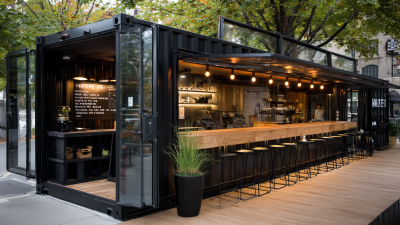
Innovative Shipping Container Restaurant Concepts Transforming Urban Dining Experiences
-
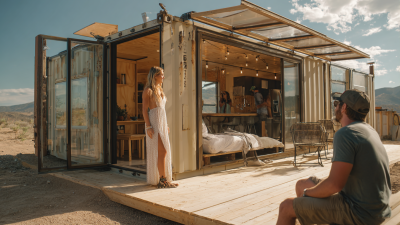
Unlocking the Future of Sustainable Living through Innovative Container Conversions
-
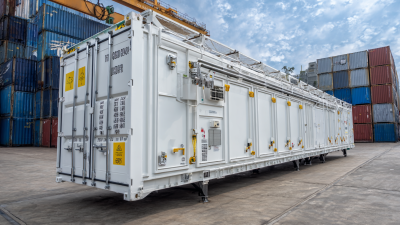
Understanding Container Insulation: The Key to Energy Efficiency in Shipping and Storage
-

Transform Your Space: The Rise of Shipping Containers for Storage and Their Eco-Friendly Benefits
-

Maximize Your Space: The Rising Trend of Second Hand Storage Containers in Urban Living
-
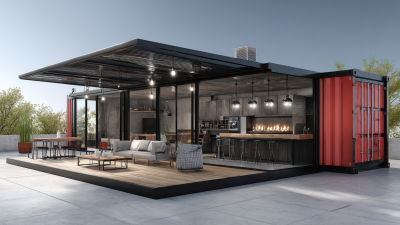
Transforming Your Space: Innovative Uses for Empty Shipping Containers

